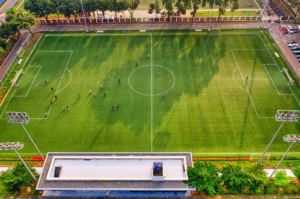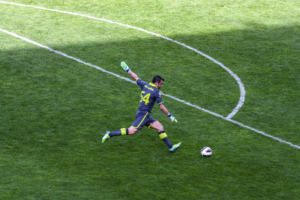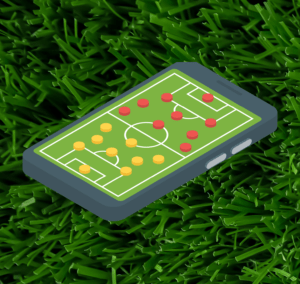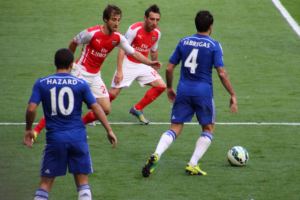Full backs operate on the left and right sides of the defense. Fullbacks are versatile and can play very attacking roles at times. Some of the greatest full-backs of the game were known for their quick feet and deadly crosses. However, make no mistake, full-backs are defenders first. Their main priority is defending, with a secondary role of supporting their wing partner or the midfield.
Success in pace
To be successful, modern full-backs need to be physical, quick, explosive and have the vision to know when to push up the field to support the attack. The full-back does not get the most mileage on the pitch, however, they usually make the most sprints.
Involved in both the attack and defense, full-backs must go up and down the field with the momentum of the game. On attack, they are expected to support the winger, sometimes even overlapping them. Also, on defense, they are expected to return to their defensive line to mark the opposing winger.
Full-backs are a general term for the outside backs, however, there are a variety of roles that a full-back can play.
Traditional full back
The traditional full-back is a defender-first mentality. So, the full-back is required to fulfill his defensive duties first, and push up the field to support the winger second. By moving forward down the line with the attack at key moments, full-backs provide support for the forward players by providing an outlet and possibly overlapping to whip in a cross.
Wing back
The wing-back is a player that sits between the midfield and defensive lines on the outsides. Because he/she is usually without support in the wings, the wing-backs must provide width on the attack, and mark the opposition wide threat on defense. The wing-back can even provide extra pressure on the opposition’s wide players to win possession of the ball quickly.
Also, because wing-backs do the job of two positions at once, they are suited to a 3 center-back set up to provide cover when the wing-backs push up. Or, with a defensive midfielder to cover the gap.
Underlapping wing back
The underlapping wing-back is very similar to the regular wing-back with one key difference. On attack, the underlapping wing back pushes up the field into the defensive midfield position to provide extra outlets in the midfield. This is opposed to regular wing-backs who are expected to overlap and get as wide as possible.








